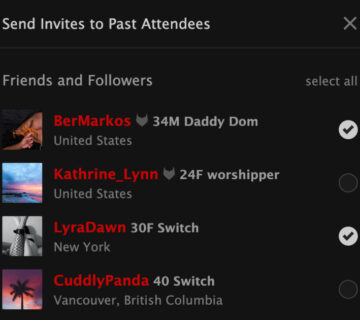Fetlife.com is the largest and most active social network catering to the BDSM, kink, fetish, and alternative lifestyle communities. At the heart of this platform are the countless groups that provide specialized networks for sharing, learning, and social connections. As privacy concerns become increasingly paramount in 2025, understanding how to manage group privacy on Fetlife is essential for creating a safe and respectful social experience tailored to sensitive and diverse kink identities.
This detailed article covers the key aspects of Fetlife group privacy, how to configure settings, best practices for moderators and members, and effective strategies for maintaining secure and inclusive kink communities.
The Importance of Group Privacy on Fetlife
-
Protecting Member Anonymity: Many kink practitioners prioritize confidentiality to avoid workplace or social stigma.
-
Facilitating Safe, Honest Dialogue: Privacy encourages openness about sensitive topics without fear of exposure.
-
Building Trusted Communities: Groups with strict privacy controls foster deeper bonds and accountability.
-
Complying with Legal and Ethical Standards: Ensures that discussions, content, and membership respect consent and law.
-
Minimizing Harassment and Abuse Risks: Restricting access limits trolls, bots, and bad actors.
Fetlife Group Privacy Settings Explained (2025)
1. Group Privacy Types
-
Public Groups: Anyone can join and view content, including non-members.
-
Private Visible Groups: Membership requires approval, content visible to members and visitors.
-
Private Hidden Groups: Membership by invitation only; content and membership hidden from outsiders.
2. Membership Controls
-
Approval Settings: Admins can require invitations or screening questions.
-
Membership Lists: Visibility can be toggled on or off for fellow members.
-
Member Roles: Admins, moderators, and members have graduated permissions.
3. Content Controls
-
Posts and media are accessible only within the defined membership boundaries.
-
Content warnings and NSFW tags are mandatory for sensitive material.
-
Archived posts remain private unless group settings change.
4. Event Privacy Integration
-
Group events can be private with RSVP requirements.
-
Attendance visibility settings protect participant anonymity.
Configuring Group Privacy: Step-by-Step Guide
-
Create or Access Group Settings
-
Go to your group page.
-
Click “Manage” or “Edit Group.”
-
-
Select Privacy Type
-
Choose between public, private visible, or private hidden.
-
Consider your group’s purpose and desired confidentiality.
-
-
Adjust Membership Requirements
-
Enable membership approval or invitation-only policies.
-
Set rules explaining who can join and under what conditions.
-
-
Define Content Accessibility
-
Restrict posts, albums, and event visibility accordingly.
-
Tag explicit content using Fetlife tools.
-
-
Save and Communicate Policies
-
Update the group description to reflect privacy and posting rules.
-
Welcome new members with clear guidelines on privacy expectations.
-
Best Practices for Moderators to Maintain Group Privacy
-
Conduct thorough screening of membership requests.
-
Regularly audit membership lists and remove inactive or problematic users.
-
Enforce strict adherence to content warnings and privacy agreements.
-
Offer onboarding sessions outlining privacy and community ethic standards.
-
Establish clear procedures for handling privacy breaches.
-
Promote open communication channels for member concerns.
Best Practices for Members in Private Groups
-
Respect group confidentiality and never share content externally.
-
Follow group-specific privacy and posting guidelines.
-
Use discretion when uploading photos or discussing sensitive subjects.
-
Report suspected violations promptly.
-
Engage constructively and supportively.
Privacy Risks and How to Mitigate Them
-
Screenshotting and Redistribution: Encourage community respect and use watermarking.
-
DoXXing Risks: Members should avoid sharing personally identifiable details.
-
Unintended Exposure: Regularly review group privacy and your own profile visibility.
-
Impersonation or Harassment: Use blocking and reporting tools swiftly.
Leveraging External Privacy Resources
To strengthen understanding and application of privacy best practices, Fetlife users are encouraged to consult specialized authorities such as the Australian eSafety Commissioner, which provides detailed guidance on online safety tailored to adult and kink communities:
Australian eSafety Commissioner’s Fetlife Safety Guide
This external resource complements Fetlife’s internal systems, empowering safer community participation.
Conclusion
Fetlife group privacy management in 2025 is fundamental to sustaining the trust, safety, and inclusivity vital to vibrant kink social networks. Through thoughtful configuration of privacy settings, vigilant moderation, and respectful member participation, the platform’s groups become sanctuaries where members can freely explore identity and community.
By understanding and applying the principles and tools outlined above, Fetlife users contribute to a collective digital space where kink expression thrives securely and responsibly.






No comment